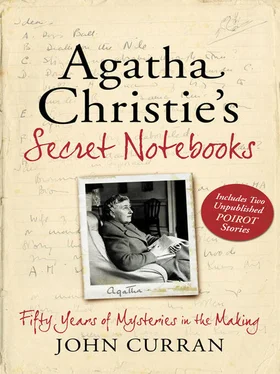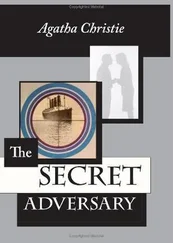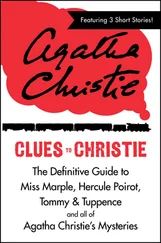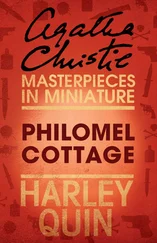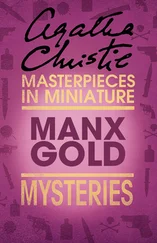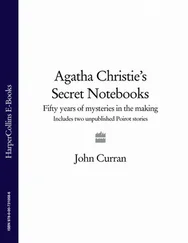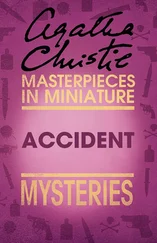Clue No. 3
In the Christie Archive there are two letters from her agent Edmund Cork. One, dated 26 June 1936, acknowledges receipt of a revised version of Dumb Witness; another, dated 29 April 1936, expresses delight at her news that Death on the Nile was finished. We now have two new limits—later than June 1932 and before April 1936. Can we do better? I think so.
Clue No. 4
It is not unreasonable to suppose that the writing of Death on the Nile and Dumb Witness, both of them among her longest books, took over a year, which would bring our latest date back to April 1935. Our new dates are now June 1932 and April 1935. And if we add two items of conjecture to the equation…
Clue No. 5
In the change from ‘The Incident of the Dog’s Ball’ to Dumb Witness, the setting moves from Little Hemel, in the county of Kent, to Market Basing, Berkshire:
General Plan P. receives letter—he and H—he writes—then he tears it up—No, we will go—Market Basing—The Lamb
Market Basing is commonly assumed to bear more than a passing resemblance to Wallingford where Agatha Christie lived. She bought her house there in 1934 and this may account for the change of setting for the novel. There is evidence for this in the reference to The Lamb, a Wallingford pub, in Notebook 63. This is, admittedly, conjecture but as Poirot would say, ‘It gives one furiously to think, does it not?’
Clue No. 6
Miss Matilda Wheeler writes to Poirot on 12 April, a Wednesday, according to Poirot’s exposition: ‘Consider the dates, Hastings’ (section v). The 12th of April fell on a Wednesday in 1933.
Conclusion?
So we may conclude that ‘The Incident of the Dog’s Ball’ was
written, in all likelihood, in 1933.
Why was it never published?
Agatha Christie was now a household name. By the mid-1930s and Three Act Tragedy she was selling 10,000 hardbacks in the first year of a new title; she was one of the first writers to appear in paperback; her books had been dramatised and filmed. Why would any magazine not jump at the chance to publish a little gem of a new Poirot story, with its guarantee of increased sales? If it was offered to them…Again, we are in the realms of speculation, but I think the reason it never appeared in print is disappointingly mundane: it was never published because she never offered it to her agent. Because, in turn, she decided to turn it into a novel. Consider the evidence:
Clue No. 1
Her production of short stories had decreased from the multiple appearances of earlier years—27 in 1923 and 34 in 1924—to a mere half-dozen in 1933 and seven the following year. As she said when she refused to contribute to the Detection Club’s collaborative novels, ‘the energy to devise a series is much better employed in writing a couple of books’. She may well have thought the same about this short story and decided to turn it into a complete new Poirot book.
Clue No. 2
The Edmund Cork letter referred to above, dated 26 June 1936, acknowledges receipt of a revised version of Dumb Witness. This seems to refer to the first four chapters, a domestic English village setting, which were added to help ensure a US serialisation sale (it was serialised in the Saturday Evening Post in November/December 1936) and would lend support to the idea that it was an expansion of ‘The Incident of the Dog’s Ball’. In the novel Hastings begins his firstperson narration only at Chapter 5; up to then the story is told in the omniscient third person with the assurance from Hastings, when he begins his narrative, that he did not witness the earlier events personally but that he ‘has set them down accurately enough’. And the opening scenes of both the short story and Chapter 5 are, apart from the month of the year, identical.
Clue No. 3
This not-offered-for-sale theory may also account for the major oversight involving the dates within the story. In section i Poirot says ‘No, April the 12th is the date [on which the letter was written] assuredly’ but in section iv he refers to August as the month when Miss Wheeler wrote the letter. An agent and/or an editor would surely have noticed a mistake of this magnitude, and one so germane to the plot.
Conclusion
In conclusion, it is entirely possible that ‘The Incident of the Dog’s Ball’ was written in 1933 and never offered for publication but, instead, transformed, in 1935/36, into the novel Dumb Witness.
‘The Incident of the Dog’s Ball’ in the Notebooks
The story is referred to in two Notebooks, but in Notebook 30 it is mentioned only in passing as Idea A in the list above. In Notebook 66 we find more detail with resemblance to the short story rather than the novel:
Dog’s Ball People
Mrs Grant—typical old lady
Miss Lawson—twittery companion
Mollie Davidson—Niece—earns living in a beauty parlour
Her young man—a ne’er do well
Journalist—Ted Weedon—has been in prison for forgery—forged uncle’s name in City office—
owing to girl pressing him for money—some actress
James Grant—prim…respectable gentleman—
Engaged to hospital nurse—Miss O’Gorman
Ellen
Cook
The niece’s name—Mollie Davidson—remains the same, as does her occupation; and that name appears nowhere else in the notes for Dumb Witness. The nephew’s is amended only slightly to Graham, although that of the victim changes substantially from Mrs Grant to Miss Wheeler. Neither Mollie’s young man or James Grant’s fiancee features in the short story although Ted Weedon’s proclivity for forgery is transferred to Charles Arundell, the rechristened nephew in the novel.
The Incident of the Dogs Ball [13] The exact wording of the title appears, more than once, in Chapter 9 of Dumb Witness and also in Miss Arundell’s letter in Chapter 5.
(From the notes of Captain Arthur Hastings O.B.E.)
i
I always look back upon the case of Miss Matilda Wheeler with special interest simply because of the curious way it worked itself out—from nothing at all as it were!
I remember that it was a particularly hot airless day in August. I was sitting in my friend Poirot’s rooms wishing for the hundredth time that we could be in the country and not in London. The post had just been brought in. I remember the sound of each envelope in turn being opened neatly, as Poirot did everything, by means of a little paper-cutter. Then would come his murmured comment and the letter in question would be allotted to its proper pile. It was an orderly monotonous business.
And then suddenly there came a difference. A longer pause, a letter not read once but twice. A letter that was not docketed in the usual way but which remained in the recipient’s hand. I looked across at my friend. The letter now lay on his knee. He was staring thoughtfully across the room.
‘Anything of interest, Poirot?’ I asked.
‘ Cela dépend. Possibly you would not think so. It is a letter from an old lady, Hastings, and it says nothing—but nothing at all.’
‘Very useful,’ I commented sarcastically.
‘N’est ce pas? It is the way of old ladies, that. Round and round the point they go! But see for yourself. I shall be interested to know what you make of it.’
He tossed me the letter. I unfolded it and made a slight grimace. It consisted of four closely written pages in a spiky and shaky handwriting with numerous alterations, erasions, and copious underlining.
Читать дальше
Конец ознакомительного отрывка
Купить книгу
